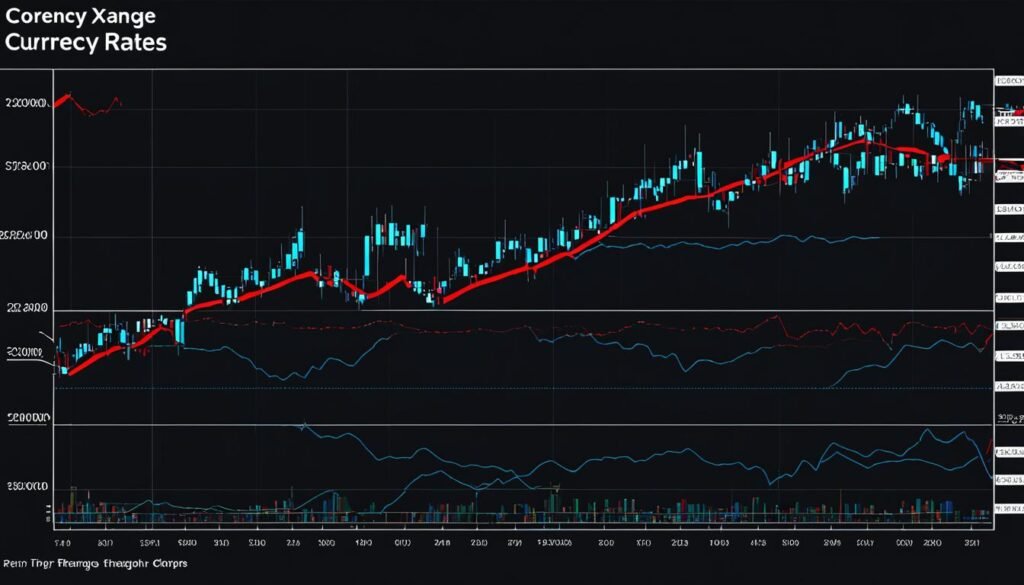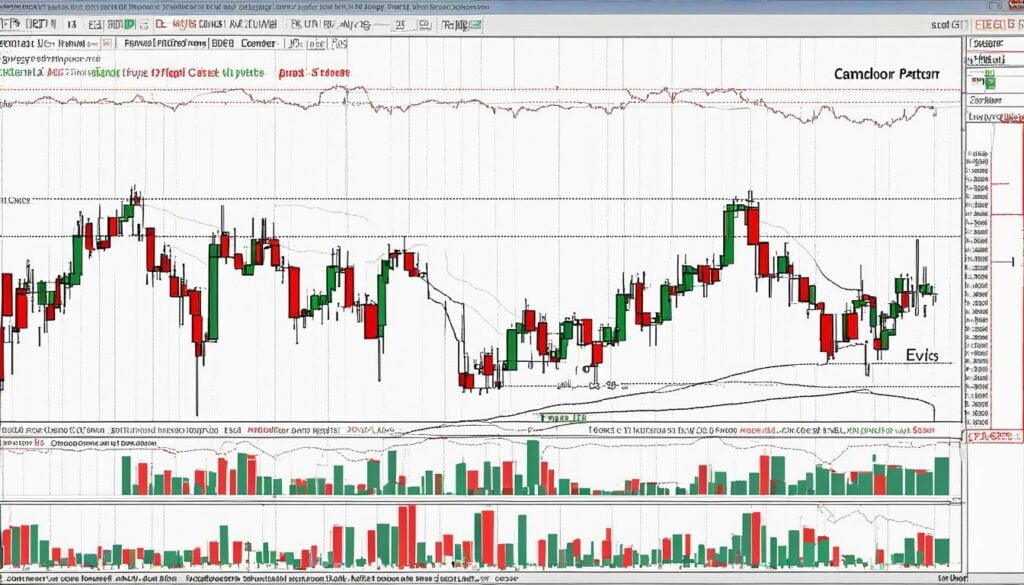If you’re new to currency trading, it’s essential to understand the basics of technical analysis. Technical analysis is a method of evaluating securities by analyzing statistics generated by market activity, such as past prices and volume. This approach helps traders make informed decisions about buying and selling, based on trends and patterns in the market.
In this beginner’s guide to technical analysis, we will cover the basics of this approach and its importance in currency trading. We’ll help you understand technical analysis concepts such as chart patterns, indicators, and trends, and how to incorporate them into your trading strategy.
Unlock the Secret to Forex Success with BOB James’ Top-Performing Signals! Experience the Ease of Proven, MyFXbook-Verified Strategies and Transform Your Trading Journey Today. Don’t Miss Out on Exceptional Performance – Join Now!
Key takeaways:
- Technical analysis is an essential approach for currency trading success.
- It involves analyzing past market activity to identify trends and patterns.
- Chart patterns, indicators, and trends are fundamental technical analysis concepts.
- Technical analysis can help traders make informed decisions about buying and selling.
- Incorporating technical analysis into your trading plan requires practice and continued learning.
Introduction to Technical Analysis
Technical analysis is a method of evaluating securities that relies on charting and statistical indicators to identify trading opportunities. This approach is based on the idea that historical price data can be used to predict future price movements.
Getting started with technical analysis can seem intimidating at first, but with the right foundation, beginners can learn technical analysis step by step. In this section, we’ll explore the fundamentals of technical analysis that are essential for beginners to know.
Chart Patterns
Chart patterns are a visual representation of price movements over time. By studying these patterns, traders can identify potential trading opportunities. Some of the most common chart patterns include:
- Trends: Traders can use trend lines to identify upward or downward trends and make informed trading decisions based on them.
- Support and Resistance Levels: These levels represent the points where the price of an asset tends to stop falling or rising, respectively. By studying these levels, traders can identify potential entry and exit points.
- Head and Shoulders: This pattern is characterized by three peaks, with the middle peak (the “head”) being the highest. Traders use this pattern to identify a potential reversal in the price of an asset.
Understanding these chart patterns is essential for any beginner looking to get started with technical analysis.
Indicators
Technical indicators are mathematical calculations based on an asset’s price and/or volume. These can be used to identify potential trading opportunities. Some popular indicators include:
- Moving Averages: A moving average is an average of an asset’s previous prices over a set period of time. Traders use this indicator to identify the direction of the trend.
- MACD: The Moving Average Convergence Divergence (MACD) indicator is used to identify changes in momentum and trend.
- RSI: The Relative Strength Index (RSI) is used to measure the magnitude of an asset’s recent price movements.
It’s important for beginners to learn how to analyze these indicators and use them effectively in their trading strategies.
Trends
Identifying trends is a critical part of technical analysis. Traders can use trend lines and technical indicators to identify the direction of the trend, whether it be upward, downward, or sideways. By understanding these trends, traders can make informed trading decisions.
Support and Resistance Levels
Support and resistance levels are important levels on a chart where there is significant buying or selling pressure. These levels can act as barriers to the price of an asset and can be used to identify potential entry and exit points. By learning how to identify and analyze these levels, beginners can improve their trading strategies.
Risk Management in Technical Analysis
One of the most important aspects of successful trading is managing risk effectively. Risk management techniques such as position sizing and stop-loss orders are essential for managing potential losses and preserving capital. It’s important for beginners to have a solid understanding of these techniques and to use them in their trading strategies.

By understanding the fundamentals of technical analysis, beginners can improve their trading strategies and make informed trading decisions. In the next section, we’ll explore different chart patterns and how they can be used to identify potential trading opportunities.
Understanding Chart Patterns
As a beginner in technical analysis, one crucial concept to understand is chart patterns. Chart patterns are graphical representations of price movements that help traders identify potential trading opportunities. By recognizing these patterns, traders can develop a better understanding of market psychology and make more informed decisions.
The three most common chart patterns are triangles, head and shoulders, and double tops/bottoms. Triangles appear as cones formed by trend lines that converge as the price moves lower or higher. Head and shoulders look like a baseline with two peaks that surround a higher peak, resembling a head. Double tops and bottoms appear when the price hits a high point twice and remains below or above these levels.
Certain patterns have distinct implications and signal different trading opportunities. Understanding these patterns and how to interpret them will help traders recognize market trends and opportunities and better predict price movements.
It’s important to note that in technical analysis, chart patterns are just one of many tools that traders use to make predictions. To make informed trading decisions, beginners must gain a solid understanding of these patterns and how to interpret them, along with other concepts such as indicators and support and resistance levels.
Analyzing Indicators
Technical indicators are an essential part of technical analysis and help traders make informed decisions based on market trends. Understanding the basics of technical analysis is crucial for beginners, and this section will provide you with some beginner-friendly technical analysis tips.
Some of the most widely used technical indicators are:
| Indicator | Purpose |
|---|---|
| Moving Averages | Identify market trends and momentum |
| MACD | Measure the strength of a market trend and signal potential trend reversals |
| RSI | Indicate overbought and oversold market conditions |
These are just a few examples of the many technical indicators available for traders to use. It’s important to understand the purpose of each indicator and how to interpret their signals. For instance, moving averages can help identify market trends and momentum while the MACD indicator can signal potential trend reversals. The RSI indicator is useful for identifying overbought and oversold market conditions.

By analyzing technical indicators, traders can make informed decisions based on market trends. However, it’s important to keep in mind that technical indicators should not be used in isolation. Effective technical analysis requires a comprehensive understanding of the market, including fundamental analysis, market sentiment, and global events.
Identifying and Trading Trends
One of the key components of technical analysis is identifying trends. By recognizing the direction of a trend, traders can make informed decisions about whether to buy or sell a particular currency pair.
But how do you go about spotting a trend? One way is to use trend lines, which connect the highs or lows of a currency pair over a specific period. If the line is sloping upwards, it indicates an uptrend, while a downward slope points to a downtrend. Another way to identify trends is to use moving averages, which smooth out price fluctuations to reveal the overall direction of a currency pair.
Once you’ve identified a trend, the next step is to develop a strategy for trading it. Some traders prefer to trade in the direction of the trend, buying when the pair is trending upward and selling when it’s trending downward. Others may look for opportunities to trade against the trend, known as counter-trend trading. Whatever your approach, it’s important to have a clear plan in place and to stick to your strategy.

| Strategy | Description |
|---|---|
| Follow the trend | Buy when the currency pair is in an uptrend and sell when it’s in a downtrend |
| Counter-trend trading | Look for opportunities to trade against the trend |
| Trend reversal trading | Attempt to predict when a trend is about to reverse, then trade in the opposite direction |
Whether you’re a beginner or an experienced trader, understanding trends is a crucial part of technical analysis. By keeping an eye on the direction of a currency pair, you’ll be well on your way to making informed trading decisions.
Support and Resistance Levels
Support and resistance levels are two key technical indicators that can help traders make informed decisions. Support refers to the price level at which a particular asset experiences demand, preventing it from further declining. Resistance, in contrast, represents the price level at which an asset experiences selling pressure, preventing it from increasing further.
Support and resistance levels are formed based on the historical data of asset prices. Traders can use these levels to determine potential entry and exit points for trades based on whether the price is approaching support or resistance. When an asset’s price breaks through either of these levels, this can indicate a potential trend reversal or continuation, providing traders with valuable insights into market sentiment.
| Key Takeaways: |
|---|
| Support and resistance levels are formed based on historical price data. |
| Traders use these levels to determine potential entry and exit points for trades. |
| A break through support or resistance levels can indicate a trend reversal or continuation. |
For beginners, understanding support and resistance levels is crucial to applying technical analysis effectively. By learning to identify these key levels, traders can make more informed decisions regarding trade entries, exits, and stop-loss orders.

Risk Management in Technical Analysis
Risk management is a critical aspect of any successful trading strategy. As a beginner, it is essential to understand and implement effective risk management techniques in your technical analysis. Here, we will cover some of the essential concepts:
- Position sizing: Determine the size of each trade based on your account size and risk tolerance. Generally, it is recommended not to risk more than 2% of your account per trade.
- Stop-loss orders: Placing a stop-loss order can limit your losses if the market moves against you. It is important to decide on a stop-loss level before entering a trade.
- Risk/reward ratios: A risk/reward ratio helps you determine the potential reward of a trade compared to the potential risk. A ratio of 1:3 or higher is often considered favorable.
Remember that risk management is not a one-time task. It requires ongoing monitoring and adjustments to ensure that your trades are well-protected.

Implementing these risk management techniques in your technical analysis can help you minimize losses and increase your chances of success in currency trading.
Developing a Trading Plan
A trading plan incorporating technical analysis is a critical component of successful currency trading. Without a well-defined plan, it is easy to fall prey to emotions and make impulsive decisions, leading to losses. In this section, we will guide beginners through the process of creating a trading plan that incorporates technical analysis.
Goal Setting
The first step in developing a trading plan is to set clear, realistic goals. Your goals should be specific, measurable, achievable, relevant, and time-bound (SMART). When setting your goals, consider your risk profile, capital, and desired trading style.
Defining Entry and Exit Criteria
Once you have set your goals, the next step is to define your entry and exit criteria. Technical analysis tools such as chart patterns and indicators can help you identify potential trading opportunities. You should also establish stop-loss levels and profit-taking targets to manage your risk and maximize your returns.
Maintaining Discipline
Maintaining discipline is critical to the success of your trading plan. You should follow your plan diligently, sticking to your established entry and exit criteria, and remain focused on your goals. It is also crucial to evaluate your plan periodically and adjust it as necessary to reflect changes in market conditions or your risk profile.
“A trading plan is a bridge between your goals and your success in the currency trading market. Without a plan, you will drift aimlessly from trade to trade, exposing yourself to excessive risk and missing out on potential profits.”
Conclusion
Technical analysis is a powerful tool for currency trading beginners, and understanding its basics is essential to achieving success in the market. By learning how to identify chart patterns, interpret technical indicators, and recognize support and resistance levels, beginners can make informed trading decisions with confidence.
As highlighted in this beginner’s guide to technical analysis, continued learning and practice are key to mastering this approach to trading. By staying up to date with the latest trends and strategies, and regularly applying technical analysis principles in real trading scenarios, beginners can improve their skills and achieve greater success in currency trading.
So if you’re new to technical analysis, don’t hesitate to dive in and start learning step by step. With persistence and dedication, you too can become proficient in this powerful approach to trading.
Thank you for reading our Technical Analysis Basics for Beginners guide. We hope it has provided you with valuable insights and tips to get started on your trading journey.
FAQ
What is technical analysis?
Technical analysis is a method of evaluating securities by analyzing statistical trends gathered from trading activity, such as price movement and trading volume. It is used to identify patterns, trends, and potential trading opportunities.
Why is technical analysis important for beginners?
Technical analysis provides a framework for understanding market behavior and making informed trading decisions. It helps beginners to identify trends, assess market sentiment, and determine entry and exit points for trades.
How do I get started with technical analysis?
To get started with technical analysis, it is advisable to learn the basics such as chart patterns, indicators, and trends. You can begin by studying educational resources, attending webinars, or joining online communities where experienced traders share their knowledge and insights.
What are chart patterns?
Chart patterns are specific formations on price charts that tend to repeat over time and provide valuable information about potential future price movements. They include patterns such as triangles, head and shoulders, and double tops/bottoms.
What are technical indicators?
Technical indicators are mathematical calculations applied to price and volume data to help traders identify potential market trends and reversals. Popular indicators include moving averages, MACD, and RSI.
How do I identify and trade trends?
Identifying trends involves analyzing price charts to determine the direction in which an asset’s price is moving. Traders can use trend lines, moving averages, and other tools to spot and confirm trends. Trading trends involves buying when prices are rising in an uptrend and selling or shorting when prices are falling in a downtrend.
What are support and resistance levels?
Support and resistance levels are specific price levels at which an asset’s price tends to encounter resistance (selling pressure) or support (buying pressure). Traders often use these levels to identify potential entry and exit points.
How can I manage risk in technical analysis?
Risk management is crucial in technical analysis to protect your capital. This involves setting appropriate position sizes, using stop-loss orders to limit potential losses, and maintaining a favorable risk/reward ratio for each trade.
How do I develop a trading plan with technical analysis?
Developing a trading plan involves setting clear goals, defining your trading strategy, determining entry and exit criteria based on technical analysis, and establishing risk management rules. A trading plan helps guide your decision-making process and promotes discipline in trading.
What are the key takeaways for beginners in technical analysis?
Key takeaways for beginners include the importance of learning the basics, practicing, and continuously improving your technical analysis skills. It’s essential to stay disciplined, manage risk effectively, and adapt your strategies as market conditions change.


